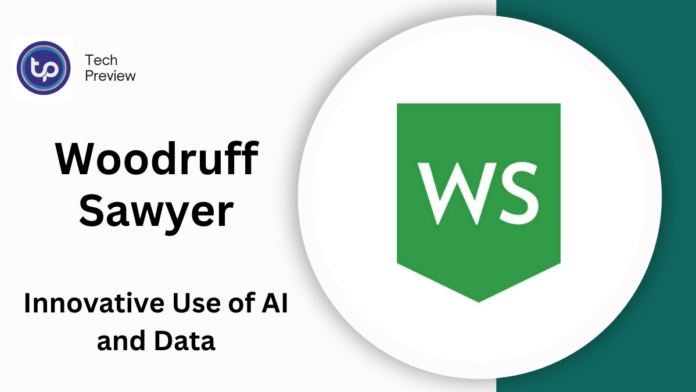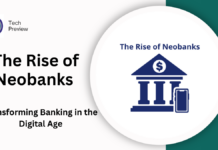In the rapidly evolving landscape of insurance brokerage, firms like Woodruff Sawyer are leading the way by integrating artificial intelligence (AI) and data analytics into their operations.
This strategic approach enhances service offerings, improves client outcomes, and streamlines operations. Understanding how Woodruff Sawyer leverages AI and data becomes essential for clients and professionals as the insurance industry transforms.
In today’s digital age, businesses face many risks and challenges, from cyber threats to complex regulations.
Woodruff Sawyer has positioned itself as a forward-thinking brokerage that combines expert knowledge with cutting-edge technology, empowering clients to thrive in a competitive marketplace.
The top ways how this works;
1. Enhanced Risk Assessment
One of the most impactful applications of AI in insurance is risk assessment. Woodruff Sawyer employs sophisticated algorithms to analyse vast amounts of data, including historical claims, industry trends, and client-specific factors.
This comprehensive analysis allows them to provide accurate risk profiles for their clients, leading to better-informed decision-making.
For instance, Woodruff-Sawyer can use machine learning models to identify trends and potential hazards that traditional methods might overlook.
This proactive risk identification enables businesses to implement mitigation strategies to safeguard their interests and lower their insurance premiums. The result is a more secure and financially sound approach to risk management.
MUST READ: Aven Becomes a Unicorn After $142 Million Series D Funding Round: Key Insights and Impact
2. Data-Driven Decision Making
Data is the backbone of modern business strategies, and Woodruff Sawyer excels at utilising advanced analytics tools.
The firm generates insights that inform its insurance solutions by collecting and analyzing data from various sources—including market research, client feedback, and internal performance metrics.
This data-driven approach helps clients understand their unique exposures, allowing for tailored coverage options.
Additionally, real-time data analytics enables the brokerage to adjust recommendations as market conditions evolve, ensuring clients can access the most relevant information.
3. Predictive Analytics for Claims Management
AI-powered predictive analytics plays a crucial role in claims management at Woodruff Sawyer.
By analysing historical data and emerging trends, the firm can anticipate potential claims before they occur. This forward-thinking approach helps in setting appropriate reserves and facilitates proactive client management.
For example, Woodruff-Sawyer uses predictive models to identify clients who may be at higher risk for claims due to industry-specific factors.
By advising these clients on best practices and risk management techniques, the firm can significantly reduce the likelihood of claims, improving client satisfaction and lowering overall costs.
4. Streamlined Operations through Automation
Automation is another critical area where Woodruff Sawyer utilises AI to enhance efficiency. Routine tasks such as data entry, policy renewals, and claims processing can be time-consuming and prone to human error.
By automating these processes, Woodruff-Sawyer significantly improves operational efficiency, allowing their team to focus on strategic activities such as client engagement and complex risk analysis.
Moreover, automation enhances consistency and accuracy in operations. By reducing manual intervention, the firm can deliver faster service and minimise the risk of errors.
5. Personalized Client Engagement
In an age where personalized service is paramount, Woodruff Sawyer stands out by using AI to tailor their interactions with clients.
They can create customised communication strategies and service offerings by analyzing client data, preferences, and behaviour patterns.
This level of personalization helps build stronger client relationships and increases retention rates, as clients feel understood and valued.
6. Continuous Learning and Improvement
AI is not just a static tool; it learns and evolves over time. Woodruff Sawyer continually updates its AI models and data analytics processes to ensure they use the latest information and techniques.
This commitment to continuous improvement means that clients benefit from cutting-edge solutions that are responsive to emerging risks and industry changes.
By adopting a culture of continuous learning, Woodruff Sawyer can quickly adapt to market dynamics, regulatory changes, and technological advancements.
7. Collaboration with Insurers
Woodruff Sawyer’s integration of AI and data analytics extends to its relationships with insurers.
Providing underwriters with richer data and insights facilitates better underwriting decisions and pricing models. This collaborative approach helps insurers assess risks more accurately, ultimately leading to better products and services for clients.
This synergy between brokerage and insurers benefits clients and fosters a more robust insurance ecosystem.
8. The Role of Cybersecurity in AI Implementation
As Woodruff Sawyer embraces AI and data analytics, they also prioritize cybersecurity.
Protecting sensitive client data is paramount, especially as cyber threats become increasingly sophisticated.
By implementing robust cybersecurity measures alongside AI solutions, Woodruff Sawyer ensures that client information remains secure.
This focus on cybersecurity protects clients and builds trust in the firm’s capabilities.
Conclusion
As the insurance industry embraces technology, Woodruff Sawyer is at the forefront of this transformation.
By leveraging AI and data analytics, they enhance risk assessment capabilities, streamline operations, and provide personalised service to clients.
This improves efficiency and client satisfaction and positions Woodruff Sawyer, as a thought leader in the insurance brokerage space.
In a market where adaptability and insight are key, Woodruff Sawyer’s innovative approach ensures that clients are well-equipped to navigate the complexities of risk.
As they continue to innovate and integrate cutting-edge technologies, clients can expect advanced solutions tailored to their unique needs, securing their interests in an ever-changing world.
People Also Ask
1. How is AI transforming the insurance industry?
AI is revolutionizing the insurance industry by automating processes, enhancing risk assessment, improving claims management, and personalizing client interactions. It allows brokers to provide more accurate predictions and tailored services, ultimately benefiting clients.
2. What types of data analytics are used in insurance?
Common types of data analytics in insurance include descriptive analytics (to understand past performance), predictive analytics (to forecast future outcomes), and prescriptive analytics (to recommend actions based on data insights).
3. What benefits do clients gain from AI in insurance brokerage?
Clients benefit from more accurate risk assessments, personalized service, faster claims processing, and proactive risk management strategies. This leads to improved coverage options and potential cost savings.
4. How does automation improve insurance operations?
Automation streamlines routine tasks reduces human error, enhances operational efficiency, and allows employees to focus on higher-value activities like client engagement and strategic decision-making.
Click here to learn more.









